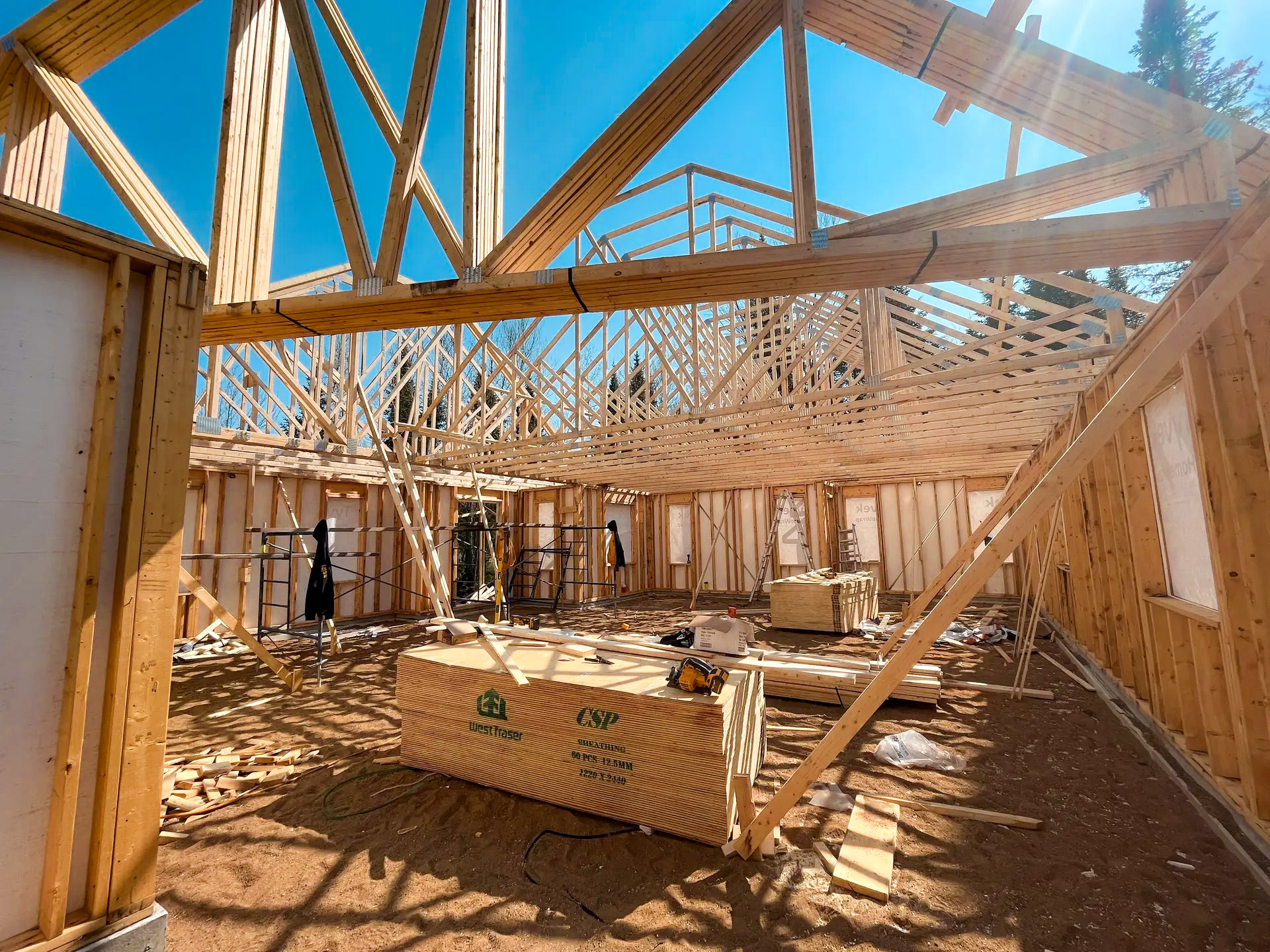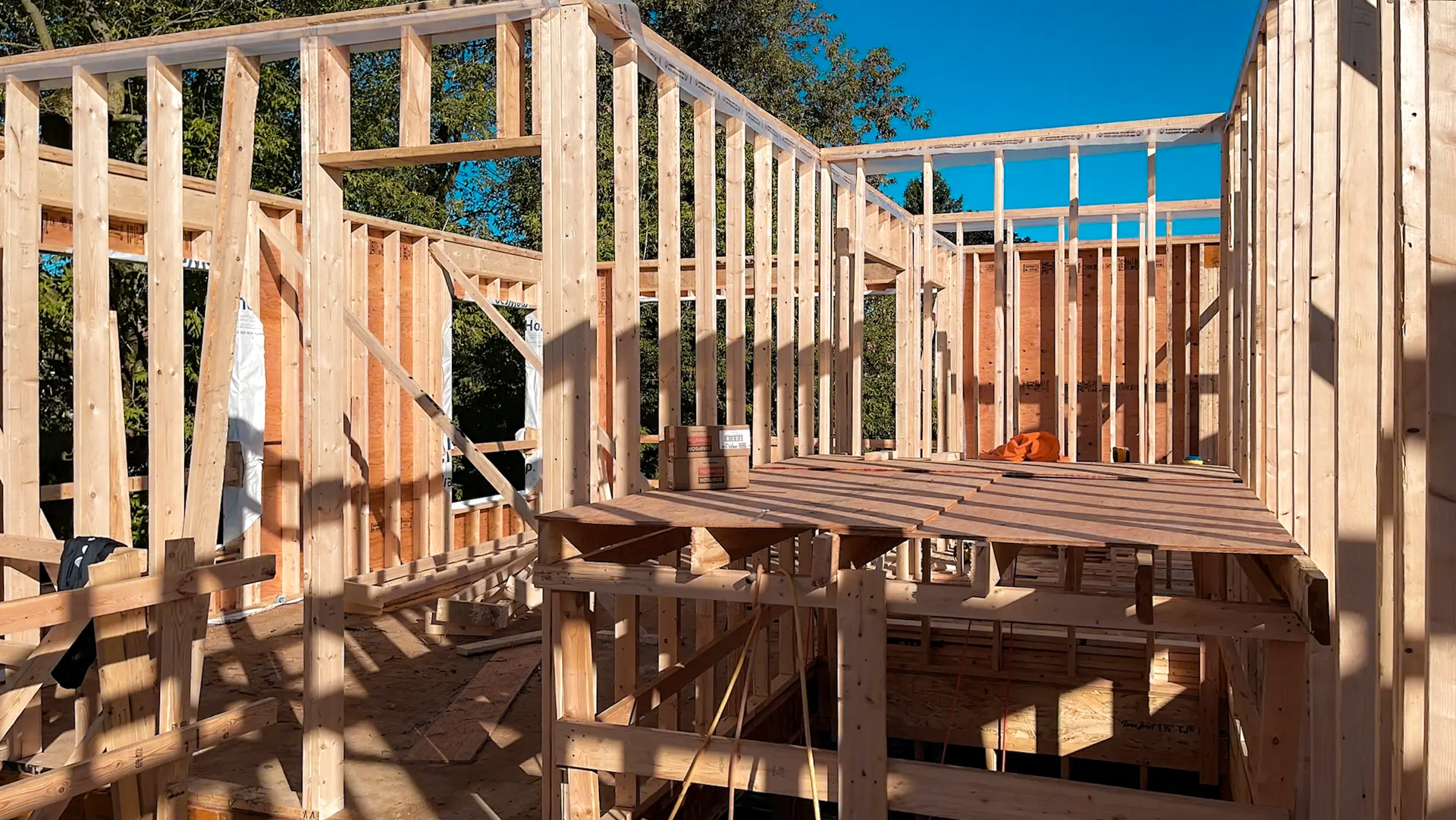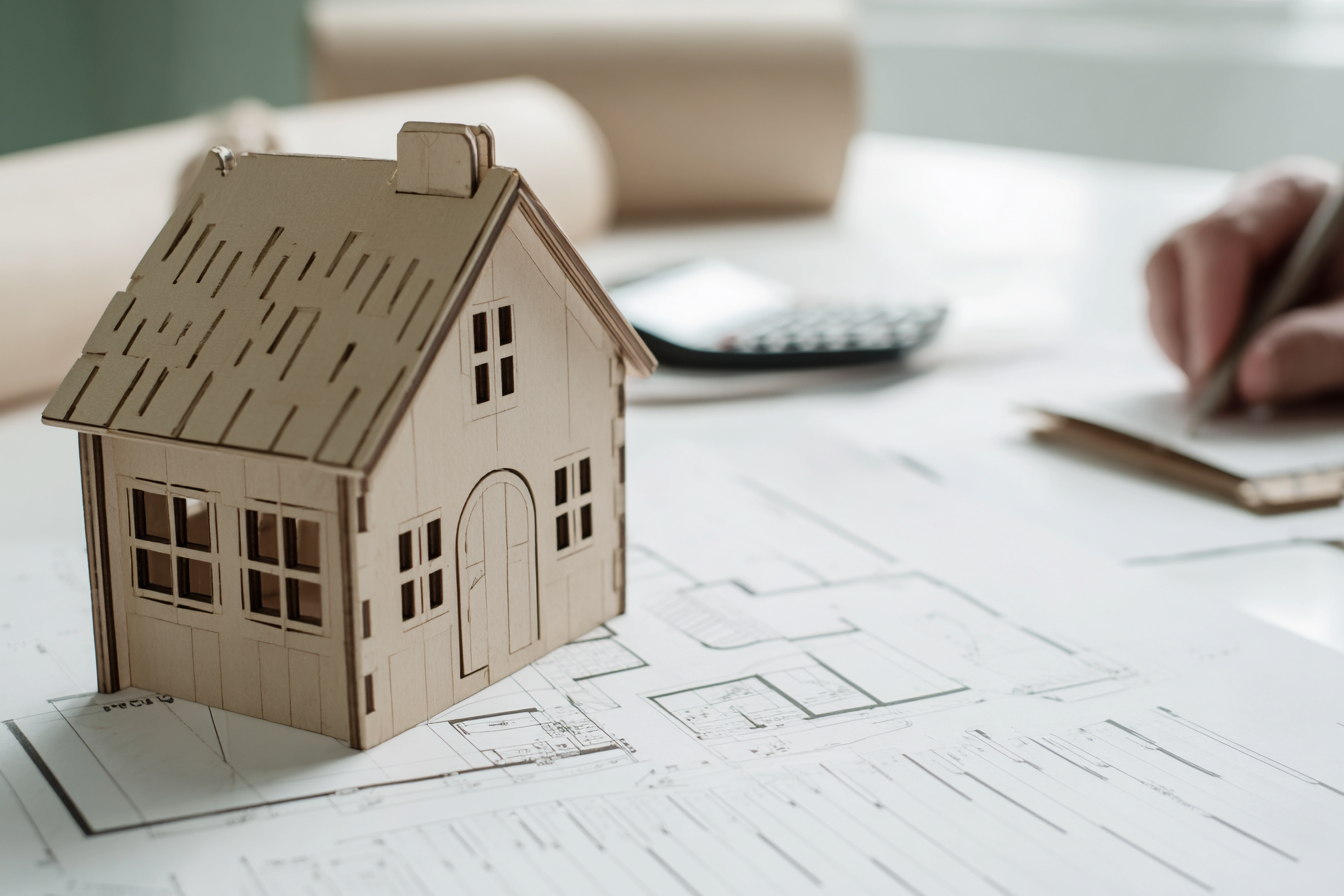Planning the Budget for Your Self-Build House Project
By Editorial Team
Updated on July 6, 2025

Every self-build project inevitably begins with the following question: how much will it cost? It’s nearly impossible to set aside this important consideration.
The care you take in outlining all aspects of the project will greatly influence the accuracy of your budget and help you avoid unpleasant surprises due to unforeseen expenses. But how do you properly plan the budget for your self-build home project?
Right from the start, it’s important to acknowledge that it’s impossible to provide exact figures when it comes to the cost of a self-build project, as each one has its own unique characteristics. Several factors will influence the final bill, including the quality of materials used, the number of people you pay to help with the build, and the location of your future home.
Still, certain guidelines can be extremely useful to help you avoid overlooking key items or overspending at one stage of the project.
How much does it cost to build a house—and how do you calculate it?

Source : 9466-6047 quebec inc HQM
Set a Maximum Budget With a Financial Advisor
To determine whether building your own home is financially feasible, you first need to know the maximum amount you can spend without jeopardizing your finances. A meeting with a financial advisor is essential to clarify this. Generally, your debt repayments should never exceed 42% of your gross income.
When estimating the total project cost, your financial advisor will of course factor in your current financial obligations before giving a recommendation. After determining your maximum budget, you should set aside about 15% of that amount for unexpected costs to avoid going over budget during your self-build project.
Break Down Your Budget
For the land purchase: Set aside about 25% to 30% of the total project cost for the lot. Of that, 7% to 8% will be for the notary fees.
For the home construction itself, you’ll want to follow these general breakdowns:
Excavation and foundation work (footings, foundation walls, concrete pouring, floor joists): 30% to 35%
Framing and enclosing the structure (windows, doors, roofing, stairs, electrical, plumbing, insulation, exterior finishes): about 30%
Interior wall and ceiling construction (drywall installation): 10%
Utilities and finishes (hookups to water, electricity, sewer; countertops, exterior stairs, cabinetry, flooring, painting, plumbing fixtures, landscaping): 25% to 30%
Connecting to municipal sewers alone typically costs between $2,500 and $9,000. As for the electrical connection, the price will depend on the distance between your home and the power grid.
Keep in mind that these percentages apply regardless of how much of the work you’re doing yourself.
A Few Prices You Should Never Underestimate
Other related costs will vary depending on your project. Make sure to budget for:
Blueprints and plans (required for your building permit): A plan prepared by a technologist usually costs between $1 and $3 per square foot, but this may increase for complex builds. If you hire an architect, expect to pay 8% to 12% of the total construction cost (before tax). Be careful—any changes during the process will incur additional fees, and prices can fluctuate based on the scope and timeline of the work.
Building permit: Costs vary widely depending on the location of your home. In Montréal, for example, the permit can cost 10 times more than in Saint-Eustache. In Montréal, it's $9.80 per $1,000 in construction value (minimum $164.20 for residential properties). Still, your permit should not exceed 1% of the total construction cost.
Certificate of location: Expect to pay around $1,580.
Cost estimate for the work: Construction estimators charge an average of $19 to $43 per hour.
Land transfer tax ("welcome tax"): This depends on the value of your new home. You can use a land transfer tax calculator to get an estimate.
Soil and water quality tests: Soil tests alone can cost between $700 and $3,000.
Liability insurance: It is strongly recommended that you obtain this to protect yourself and anyone working on your site.
A Few Additional Details

Source : Mohana Homes
Turnkey vs. Self-Build
Despite the number of steps involved in such a large-scale project, building your own home can help you save about 30% compared to a turnkey construction with the same features.
Basement
Want a basement? That will increase your budget by approximately 5%. To get the best possible prices for your materials, be sure to request at least three quotes from suppliers.
Regulations for Self-Built Homes Across Canada
Across Canada, planning and budgeting are important steps in any self-build project, but equally crucial is understanding and following local building regulations and codes. Each province and territory has its own building code, typically based on the National Building Code of Canada, and municipalities enforce additional requirements for permits, inspections, and zoning.
To legally build your own home, you must obtain the necessary permits, ensure your plans comply with local building codes, and pass required inspections. Regulations cover structural safety, fire safety, energy efficiency, and more, and may vary depending on your location and the type of construction. Staying informed about these requirements is key to a successful and legally compliant self-built home in Canada.
Life Insurance to Protect the Results of Your Work

Source : RenoQuotes
Planning to build your own home or undertake renovations? There’s a good chance you’ll be increasing your line of credit or mortgage. In that case, it’s highly recommended to look into a life insurance policy—or if you already have one, to review it. Chances are, your current coverage may not be enough.
Whether you're renovating or preparing to buy a home, you can get a free life insurance quote in under 5 minutes for peace of mind.
Beyond peace of mind, life insurance provides a tax-free lump sum that’s paid to your loved ones after your death.
Life insurance can serve several purposes, including:
Covering temporary debts
Paying funeral and post-death expenses
Replacing income so your family can maintain their standard of living
Leaving an inheritance
Types of Life Insurance
There are two main types of life insurance: term life insurance and permanent life insurance.
Term life insurance: This type covers short-term needs, such as mortgage balances, children’s education, car loans, or other personal debts. It’s the most affordable and most popular type of life insurance.
Permanent life insurance: Much more expensive than term life, this policy covers long-term needs like funeral expenses, income replacement, or inheritance. It includes a cash value that increases annually and can be withdrawn at any time if you cancel your policy—though the withdrawn amount will be taxed.
FAQ
What kind of budget should you expect for a prefab or kit home in Canada?
For all of Canada in 2025, the budget required to build a new kit home varies depending on the size, the quality of materials, and the location of the lot. In general, the base kit price ranges from $80 to $200 per square foot, but you should typically expect to pay between $150 and $250 per square foot for a turnkey home, including labour, foundation, and utility hookups.
Is it cheaper to buy or build your own house when aiming for a "cheap" build?
In Canada, whether it is cheaper to buy or build a house depends on several factors, including location, property type, and market conditions. Generally, buying a pre-existing home is less expensive than building one from scratch, especially in major cities where land prices are high. For example, in Toronto, while building a 2,000-square-foot home might cost around $550,000 (excluding land), purchasing a lot large enough to build on could run over $1 million, making buying an existing home potentially more cost-effective. In contrast, in regions with lower land costs and less competition, building might offer better value and the advantage of customization.
Building yourself a custom home: can you legally do it?
Yes, you can legally build your own house in Canada, but you must follow local regulations. This process involves purchasing land, obtaining architectural plans that comply with local building codes, securing the necessary building, electrical, plumbing, and other permits from your municipal government, and hiring licensed contractors or managing the construction yourself if you have the expertise and local permission. Skipping permits or failing to comply with regulations can lead to legal issues, fines, and problems with insurance or future home sales.
Looking for something else?
Related articles
The latest industry news, interviews, technologies, and resources.

Editorial Team
•07 Nov 2023
Keeping a balcony well maintained can be difficult! Your balcony hangs outside all day and night, sitting in the open air. As a result, it is susceptible to the various elements, collecting copious amounts of dirt and dust. Grime flies up from the adjacent street, birds set up their nests in its nooks, rain and snow come and go...

Karine Dutemple
•07 Nov 2023
When large-scale renovation projects are happening, you may lose full access to the most important sections of your home, such as the kitchen or bathroom. In the case of a bathroom renovation, depending on the work that is being carried out and the agreement you have signed with the contractor, the timespan of the project can vary and sometimes last several weeks, thus creating a certain period of inconvenience for you or your family, especially if you have young children.

Amanda Harvey
•07 Nov 2023
After the excesses of the holiday season and at the start of a new year, society becomes captivated with making resolutions that often manifest in better lifestyle choices: people look to live cleaner and more efficiently while still indulging in their passions. In this regard, the Swedish concept of "Lagom" is currently trending: an ethos of moderation and minimalism.

Karine Dutemple
•07 Nov 2023
If there is any certainty in this world, it is that there will always be dishonest people knocking on your door to try to extract money from you that you did not plan to spend.

Cynthia Pigeon
•07 Nov 2023
Progress, innovation, and environmentally friendly concepts are all part of the current culture in various industries, and the real estate industry is no different. When it comes to architecture, the possibilities are now only limited by your imagination.